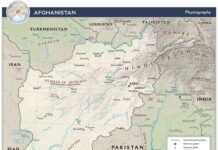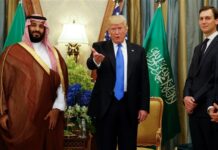Context
 The demands and expectations for a military operation in North Waziristan have arisen a number of times in the past. Each time they did not materialize. Despite international pressure, Pakistan claimed it would conduct action in this tribal agency based on its own strategic needs and not on pressures from outside. This time hopes are high once again. Some of the strategic considerations that may finally be pushing Pakistan towards a military operation are linked more to do the situation of Afghanistan.
The demands and expectations for a military operation in North Waziristan have arisen a number of times in the past. Each time they did not materialize. Despite international pressure, Pakistan claimed it would conduct action in this tribal agency based on its own strategic needs and not on pressures from outside. This time hopes are high once again. Some of the strategic considerations that may finally be pushing Pakistan towards a military operation are linked more to do the situation of Afghanistan.
Will US conduct a complete withdrawal and will it be accompanied by Afghan reconciliation, are likely a big consideration for Pakistan. Irrespective of this uncertainty, some sort of house cleaning is taking place, as represented by the elimination Asmatullah Shaheen Bhittani on February 24. By whom, and for what purpose, is less clear.
Two Scenarios for Afghanistan
In the aftermath of the Doha fiasco, at least publicly the reconciliation process in Afghanistan has stagnated. Moreover, the Bilateral Security Agreement between Afghanistan and the US has also been unable to clear the hurdles in its way. At this juncture, it appears unlikely that Karzai will sign the agreement, as President Obama warns of a complete US withdrawal. In view of the American strategic stakes in the region, zero option seems unlikely though. The head of US special operations command, Admiral Willian McRaven told the House Armed Services Committee on Feb 27th: “If we do go to zero, and there is no special operations component left in Afghanistan, it will certainly make it more difficult to be able to deal with the threat, …and the potential resurgence of al Qaeda in the area.”
Moreover, despite the rhetoric regarding the issue, a complete US withdrawal is also not in the interest of Pakistan, as it does not want the past to repeat itself. Pakistan’s economy has benefited from the American and NATO presence in Afghanistan. However, these benefits were outweighed by the cost the economy had to pay because of the deteriorating law and order situation. And this does not factor in the long-term social and environmental price.
The nation has little stamina left to sustain another of waive of refugees heading its way if US withdraws prematurely, followed by a civil war. With Chinese and Indian investments tied up in Afghanistan that indirectly benefit Pakistan; the country can hardly afford to play a spoiler role.
Nonetheless, due to the uncertainty in Afghanistan, Pakistan has to prepare for two possible outcomes at this point. One of them being: US retains a limited military presence and continues the campaign against extremists while backing up the Afghan army and economy. The second outcome, US withdraws completely. If that happens, all foreign aid is also likely to wither away while raising the potential for the dismemberment of Afghan army. This poses a huge risk for Pakistan.
The Reconciliation Process
An associated consideration is, will the US withdrawal accompany Afghan reconciliation or will it happen irrespective of a political solution, and what does this mean for the array of extremists operating from FATA and beyond.
Hopes were raised recently when some elements of the Afghan Taliban attempted to initiate a dialogue with Karzai, in a fashion Pakistan did with the TTP a few weeks earlier. But those aspirations were short lived when one of the political figures involved in the talks, Mullah Abdul Raqeeb, was assassinated in Peshawar this month. Last November, just two months ago, Nasiruddin Haqqani was mysteriously eliminated and Hakimullah Meshsud was killed in a drone strike. Other pro-Taliban leaders have also been liquidated recently around Quetta. This week, a senior TTP leader Asmatullah Shaheen Bhittani met his fate in an ambush in Miramshah.
It’s clear some sort of house cleaning is underway, by whom and for what purpose, is less clear.
Following questions surround these killings. Are the pro-peace Taliban leaders being targeted, or the ones that are resistant to reconciliation? Perhaps it is those that are serving as glue between various factions and represent the greatest future risk. Nonetheless, US and Pakistan share the goal of separating reconcilable elements from those that would have to be dealt with otherwise. These eliminations and the silence around them is perhaps a representation of this common objective. This also suggests there is an attempt to prevent the Afghan and Pakistan Taliban from consolidating, whether US stays or leave.
Regrouping or strengthening of AQ linked extremists in the AfPak region presents a risk towards defeating them in the Middle East and North African front. This point must have come under discussion during the recent high-level meetings between Pakistani and Saudi officials. Moreover, if the détente between the West and Iran continues, it is perceivable that like Geneva II talks, the specter of Iranian inclusion in the Afghan solution may also be raised in the near future. This may be one more reason for Pakistan to use it cards while it can.
What Doe This Mean
As PoliTact has pointed out in the past, if Afghan reconciliation does take place, TTP, and the groups affiliated with it, have the most to loose. This increases the pressure on them to approach talks with Pakistan and define their raison d’être. At the same time, in the absence of any movement on the Afghan political solution, the talks between TTP and Pakistan government are unlikely to yield any result.
Sensing US withdrawal from Afghanistan, the country has little appetite left for TTP. Moreover, the pressure on TTP also pushes Afghan Taliban to reconcile. Thus the connection of TTP and Afghan Taliban is the most important link in understanding the emerging dynamics of the region and the approaching military operation in North Waziristan. The associated risk for Pakistan has to do with managing the Punjabi Taliban and how they’ll respond to action against TTP, and that element is tied with Pakistan’s ties with India.
Then there is the less talked about aspect: how to deal with those elements that do want to reconcile? How will they integrate in to the society is going to be a big challenge. The experiences from other parts of the world are not that promising. In this regard, it will be critical to examine the socio-economic context that led to the creation of Taliban in the first place. In the case of Columbia, research indicates FARC members ultimately gravitated towards areas ripe with criminal activity and the peripheries, where extractive industries were located. They leaned towards systematic intimidation of businesses. With Pakistan focusing heavily on building energy pipelines from Central Asia and Iran, this indeed would be a dangerous risk to look out for.



